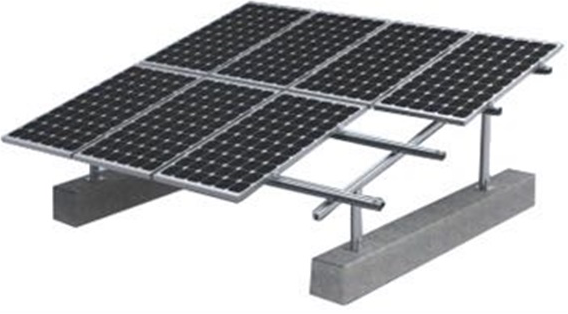Requirements and advantages of composite photovoltaic border
2024/03/13
01 Composite photovoltaic border requirements
Photovoltaic frame is an important part of solar photovoltaic modules, to package battery, glass, backplane and other materials, enhance the strength of the module, easy to transport, install and protect the role of photovoltaic modules, the product needs to have a strong carrying capacity and corrosion resistance.

Performance requirements of photovoltaic border
1. Strength and stiffness
The photovoltaic frame must have sufficient strength and stiffness to withstand external loading and its own weight, protecting the solar cell module from damage.
2. Corrosion resistance
Photovoltaic borders are often exposed to a variety of environmental conditions, including moisture, acid and alkali, so it is necessary to have good corrosion resistance to prevent corrosion, rust or deformation of the border.
3. Weather resistance
Solar modules are usually installed outdoors and need to withstand various climatic conditions, such as sunlight, high temperature, low temperature, wind, rain, etc. The photovoltaic frame should have good weather resistance and be able to resist ultraviolet radiation and temperature changes.
4. Thermal conductivity
The photovoltaic border needs to have a certain thermal conductivity to help heat dissipation, keep the temperature of the solar cell stable, and improve the efficiency and life of the battery.
5. Insulation
The photovoltaic frame should have good insulation to prevent electrical contact between the battery and the frame and avoid electrical short circuit.
6. Machinability
Photovoltaic border materials need to have good machinability, in order to facilitate manufacturers to cut, welding, molding and other processes, to achieve customized production of the border.
7. Reliability and durability
Photovoltaic bezels need to have long-term reliability and durability, able to maintain structural stability and appearance quality over many years of use.
02 Composite frame advantage
Glass fiber reinforced polyurethane (GRPU)
GRPU is a kind of high strength, high modulus and lightweight polymer composite material produced by continuous pultrusion process with high hardness polyurethane elastomer as matrix material and glass fiber as reinforcement material.
Their advantages are as follows:
1. Corrosion resistance and salt spray resistance
Polyurethane composite frame has superior mechanical properties, elastic modulus, insulation properties, expansion coefficient, yield strength, corrosion resistance, salt spray resistance, and UV light resistance, which is very suitable for Marine and sewage treatment plants and other corrosion resistance application scenarios, is the latest solution for offshore photovoltaic frame, which can reduce costs and improve power generation efficiency.
2. Higher back pressure
Coastal components are designed to carry higher back pressures (approximately 4000Pa). Traditional borders need to increase the thickness and increase the cost. The glass fiber reinforced polyurethane composite frame can give full play to the mechanical properties and easily meet the requirements of 4000Pa back pressure. The yield strength of the high yield strength glass fiber reinforced polyurethane composite frame is 990MPa, which is 5 times that of aluminum alloy, ensuring 100% rebound of the component after stress release, no residual deformation, and significantly reducing the hidden crack of the silicon wafer within a 25-year life cycle.
3. Anti-back glass burst
The elastic modulus of glass fiber reinforced polyurethane material is slightly lower than that of glass, and the frame has dynamic load damping effect under wind load dynamic, which can effectively alleviate the problem of glass bursting on the back.
4. Higher back pressure
The traditional frame material is a conductor, and each component needs to be grounded, increasing the difficulty and cost of BIPV construction. The glass fiber reinforced polyurethane composite frame has excellent insulation properties and does not need to be grounded.
5. Prevent components from bending and deformation
Glass fiber reinforced polyurethane material frame and glass almost the same expansion coefficient, linear thermal expansion coefficient of about 7×10-6/K, much lower than aluminum alloy, temperature changes will not create gaps with the wall, good sealing, can ensure the whole window in the temperature difference environment, the heat insulation, will not occur bending deformation phenomenon.
6. Low carbon emissions
Components exported to Europe after 2025 have a carbon emission index requirement. The carbon emission index of GRPU border is only 14.5% of the traditional border material, reducing the carbon emission of components export.
7. Multiple color options
Traditional border color is single, to do other colors need to increase the cost. The glass fiber reinforced polyurethane composite frame is available in a variety of colors for users to choose from at no additional cost.

